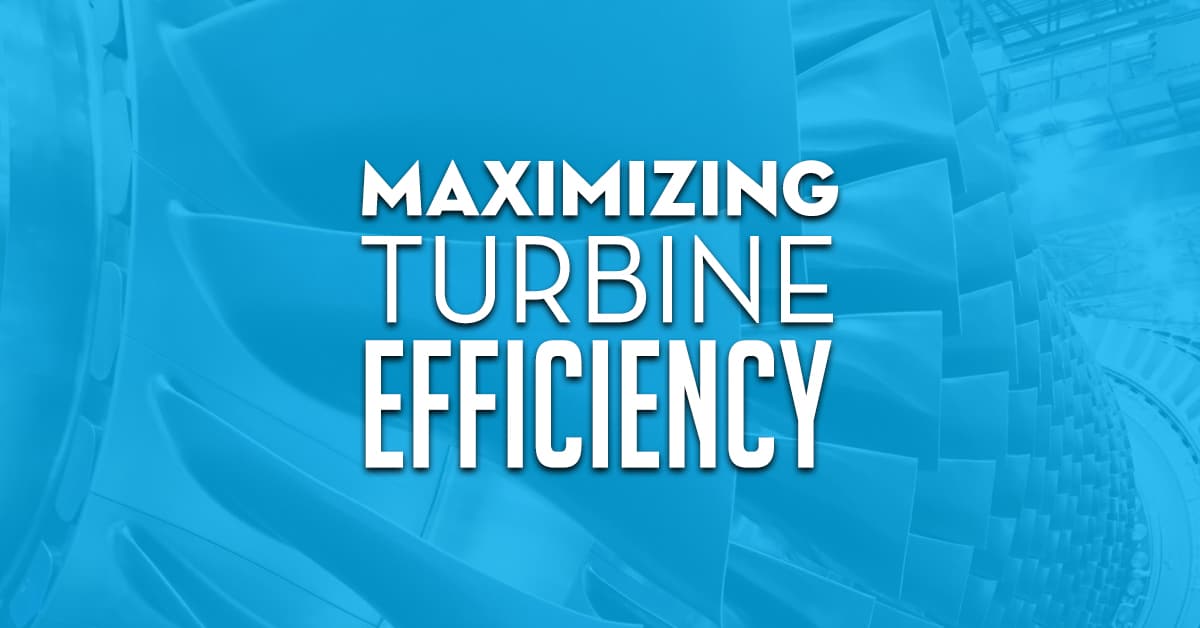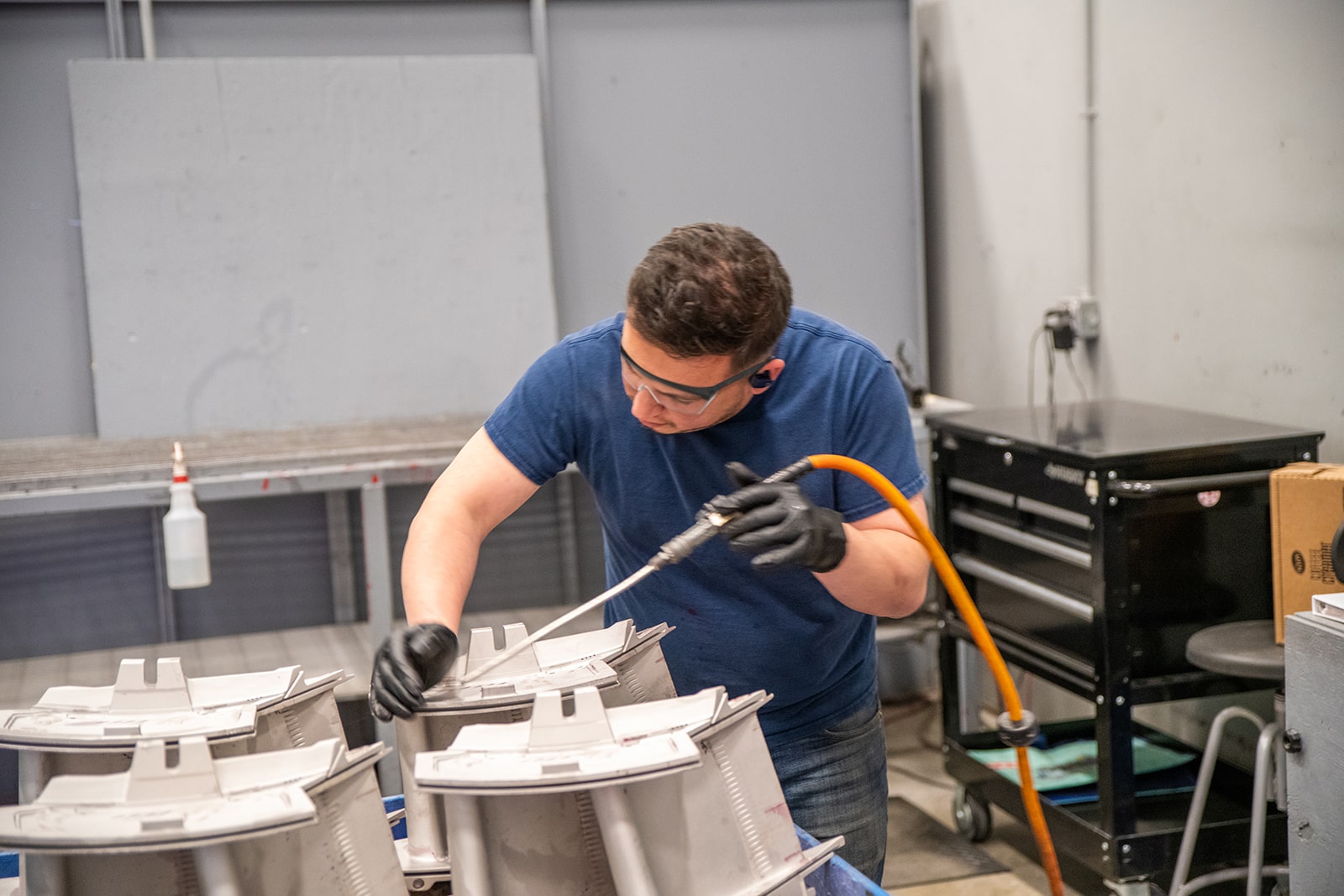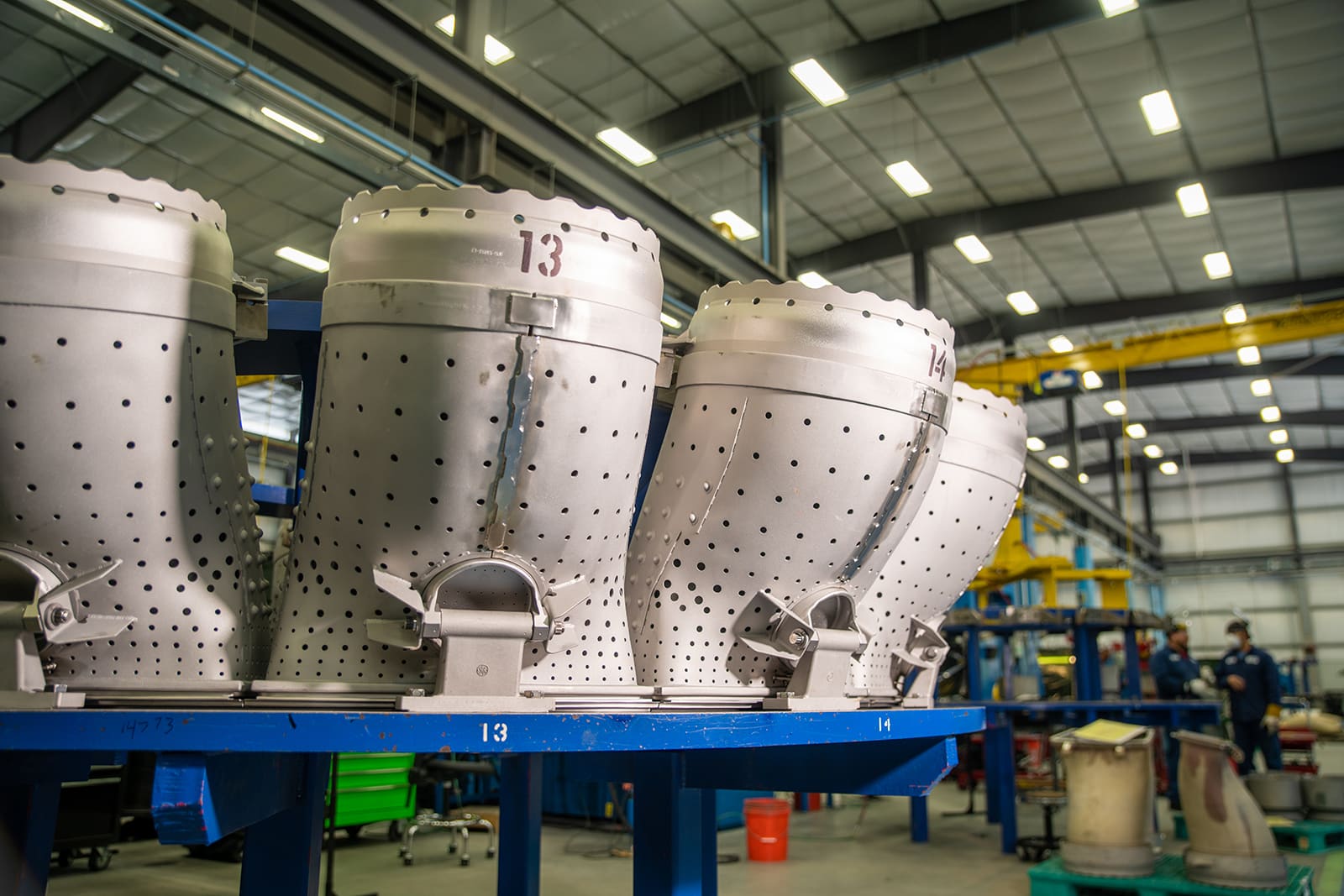Maintaining turbine equipment is crucial for ensuring power generation systems operate at peak efficiency. Turbines, both gas and steam, are integral to energy production, and their optimal performance relies heavily on consistent maintenance and timely revival strategies. This article delves into various strategies for reviving turbine equipment, focusing on aspects such as component repair, advanced diagnostics, and system upgrades.
Allied Power Group (APG) stands out as a leading provider of aftermarket solutions specifically tailored for gas and steam turbines. Since its inception in 2005, APG has been dedicated to offering comprehensive maintenance and repair services that maximize the availability, reliability, and efficiency of power-generating assets.
To ensure the peak performance and longevity of gas turbine engines in various applications, it is essential to understand gas turbine lubrication systems. These systems play a vital role in maintaining optimal performance and ensuring the longevity of turbine engines.
Effective planning and scheduling of steam turbine maintenance are paramount to guaranteeing peak performance and reliability of your equipment. This article explores strategies for planning and scheduling steam turbine maintenance that can significantly enhance overall operational efficiency.
For more information on APG’s solutions for GE Frame5 Gas Turbine: GE Frame5 Gas Turbine.
Importance of Turbine Equipment Maintenance
Regular maintenance is crucial for ensuring the optimal performance of gas and steam turbines. Effective turbine equipment maintenance not only maximizes availability and reliability but also significantly enhances overall efficiency.
Impact of Equipment Downtime
- Equipment downtime can severely disrupt power generation operations. Scheduled inspections and timely interventions are essential to prevent unexpected failures.
- Proactive maintenance approaches mitigate risks, ensuring continuous power supply and operational stability.
APG’s Mission Allied Power Group (APG) is dedicated to maximizing the availability, reliability, and efficiency of turbine equipment through innovative solutions. By prioritizing mission-critical maintenance and repair services, APG ensures that power-generating assets meet electrical power consumption demands reliably. One of the key areas where APG excels is in providing top-notch fuel nozzle solutions for gas turbines, which play a vital role in optimizing fuel flow, enhancing combustion efficiency, and reducing emissions.
APG’s commitment to cutting-edge technology also extends to its part life extensions services. These solutions help extend the lifespan of critical turbine components, reducing the need for costly replacements and maximizing asset utilization.
To learn more about how APG can enhance your turbine’s performance or to get in touch with their team for expert advice, you can visit our contact page.
Strategies for Reviving Gas Turbines
Gas turbines are crucial components in various industries, and their optimal performance is essential for smooth operations. However, issues such as wear and tear, potential failures, and the need for enhancements can arise. To address these challenges effectively, here are some strategies that can be employed:
1. Component Repair and Replacement
The components of a gas turbine play a crucial role in its overall functioning. Without timely repairs and replacements, even minor wear and tear can escalate into significant operational issues. Gas turbine component repair ensures that each part performs optimally, while gas turbine component replacement is necessary when parts reach the end of their lifecycle.
Common Components Prone to Wear
Several major components within gas turbines are susceptible to wear and require regular maintenance:
- Blades and Vanes: These are often subject to high thermal stresses and can suffer from erosion and cracking.
- Combustor Liners: These endure extreme temperatures, leading to oxidation and material degradation over time.
- Bearings: Subject to constant friction, bearings need frequent lubrication and eventual replacement to avoid catastrophic failure.
By addressing these common issues proactively, operators can significantly extend the lifespan of their turbines. Proactive component maintenance not only reduces unexpected downtime but also enhances efficiency and performance.
2. Advanced Diagnostic Techniques
Advanced diagnostic techniques such as thermography and vibration analysis are invaluable tools in the early detection of potential issues in gas turbines. These methods allow for timely interventions, preventing minor problems from developing into major failures.
Thermography
Thermography utilizes infrared imaging to detect heat variances in turbine components. By identifying hotspots that indicate abnormal conditions, operators can address issues before they lead to failures.
Vibration Analysis
Vibration analysis monitors the oscillations of turbine components. Abnormal vibration patterns often signal misalignment or imbalance within the system. Early detection through vibration analysis allows for corrective actions that prevent extensive damage.
These diagnostic techniques contribute significantly to gas turbine condition monitoring, enabling operators to maintain optimal performance levels and minimize downtime.
3. Upgrades and Retrofits
Upgrades and retrofits are critical strategies for enhancing the performance and efficiency of gas turbines. These modifications can include the implementation of advanced control systems or improvements in combustion technology.
Performance Enhancement
Upgrading control systems can lead to better regulation of turbine operations, resulting in improved response times and greater efficiency. For instance, modern control systems can optimize fuel usage, reducing operational costs while maintaining high power output.
Efficiency Improvement
Retrofits often involve integrating new technologies that were not available when the turbine was originally manufactured. Advances in materials science have led to the development of more durable components that can withstand higher temperatures and pressures, thus enhancing overall turbine efficiency.
Successful upgrade projects demonstrate substantial gains in performance metrics. For example, implementing advanced combustion technologies has been shown to reduce emissions while increasing thermal efficiency.
By adopting these strategies, such as gas turbine condition monitoring, timely repairs and replacements, and smart upgrades, businesses can ensure the longevity and optimal functionality of their gas turbines.
2. Advanced Diagnostic Techniques
Effective maintenance of gas turbines requires leveraging advanced diagnostic techniques to detect and address potential issues early on. Systems like thermography and vibration analysis play a pivotal role in maintaining turbine health, ensuring timely interventions that can prevent costly downtimes.
Thermography
Thermography, or infrared thermography, is a non-invasive diagnostic method used to measure temperature variations across turbine components. By capturing thermal images, technicians can identify hotspots indicating wear, misalignment, or other anomalies in the turbine’s operation.
- Working Principle: Infrared cameras detect heat emitted by objects and convert it into visible images. These thermal images reveal temperature differences across turbine components.
- Applications: Thermography is commonly used to inspect electrical systems, bearings, and insulation. For example, an unusually high temperature in a bearing might indicate excessive friction or lubrication issues.
- Benefits: Early detection of overheating components allows for preventive maintenance, reducing the risk of unexpected failures.
Vibration Analysis
Vibration analysis is another crucial technique for monitoring the condition of gas turbines. By analyzing vibration patterns, operators can diagnose mechanical imbalances, misalignments, and other structural issues.
- Working Principle: Sensors attached to turbine components measure vibrations and transmit data to a monitoring system. This data is then analyzed to identify deviations from normal operating conditions.
- Applications: Commonly used to monitor rotor dynamics, blade integrity, and overall mechanical health. For instance, an unusual vibration signature in the rotor could signal imbalance or misalignment.
- Benefits: Identifying abnormal vibrations early helps prevent severe damage to turbine components and extends their operational lifespan.
Integrating these advanced diagnostic techniques into regular maintenance routines ensures the reliable performance of gas turbines. Early detection allows operators to perform targeted repairs and replacements, minimizing downtime and enhancing efficiency. Furthermore, understanding the history of gas turbines can provide valuable insights into their design and maintenance requirements.
3. Upgrades and Retrofits
Enhancing gas turbine performance and efficiency through upgrades and retrofits is crucial for maintaining the operational viability and longevity of gas turbine equipment. These strategies involve implementing new technologies, modifying existing components, and integrating advanced control systems to improve overall performance.
Understanding Upgrades and Retrofits
Upgrades focus on incorporating new technologies or systems into existing gas turbines to expand their capabilities beyond original specifications. On the other hand, retrofits involve modifying existing components or systems to improve performance, often making them compatible with newer technologies.
Benefits of Upgrades and Retrofits
- Performance Enhancement: Upgrades can integrate advanced control systems that enable more precise monitoring and management of turbine operations. This improves response times and operational accuracy, leading to enhanced overall performance.
- Efficiency Improvement: Retrofits can involve replacing outdated combustion technology with newer, more efficient options. This not only increases fuel efficiency but also reduces emissions, supporting environmental sustainability goals.
Examples of Successful Turbine Upgrade Projects
- Advanced Control Systems: Implementation of cutting-edge control systems such as SCADA (Supervisory Control and Data Acquisition) facilitates better data analysis and predictive maintenance. Integrating these systems with existing turbine setups allows for real-time monitoring and data-driven decision-making.
- Combustion Technology Advancements: Upgrading combustion chambers to use low-NOx burners can significantly reduce nitrogen oxide emissions while improving combustion efficiency. These advancements help meet stringent environmental regulations without compromising performance.
- Component Optimization: Modernizing key components like compressors and turbines with advanced materials can lead to improved durability and efficiency. For instance, using ceramic matrix composites in place of traditional metal alloys enhances the turbine’s thermal efficiency by withstanding higher temperatures.
The benefits of these upgrades are multi-faceted:
- Increased Reliability: Modernized components tend to have longer lifespans and require less frequent maintenance.
- Cost Savings: Reliable operations with reduced downtime lead to significant cost savings in the long run.
- Environmental Compliance: Improved fuel efficiency and reduced emissions help adhere to environmental standards.
Implementing upgrades and retrofits is pivotal for ensuring gas turbines remain at peak performance levels throughout their operational lifecycle. By embracing these approaches, operators can significantly extend the life of their equipment while achieving greater performance efficiencies. Allied Power Group, for instance, has successfully completed the acquisition of Texas Metal Printing, which further enhances its capabilities in this domain [^1^].
Strategies for Reviving Steam Turbines
1. Blade Repair and Replacement
Steam turbine blades are vital for efficient energy conversion, playing a critical role in the overall performance of the turbine. Regular inspection and maintenance of these blades are essential to ensure that the turbine operates at peak efficiency.
Common Blade Problems
- Erosion: Continuous exposure to high-velocity steam can lead to blade erosion, reducing the aerodynamic efficiency and leading to increased wear.
- Cracking: Thermal stresses and fatigue can cause cracks, which can propagate over time and compromise the structural integrity of the blades.
Repair Techniques
- Welding: Minor cracks and surface erosion can often be repaired using advanced welding techniques. This restores the blade’s surface without needing a full replacement.
- Coating: Applying protective coatings can mitigate future erosion by creating a barrier between the blade material and steam flow.
Replacement Strategies
- Custom Manufacturing: For blades that are beyond repair, custom manufacturing of replacement blades ensures that the new components are tailored to meet specific operational requirements.
- Material Upgrades: Utilizing advanced materials with higher resistance to thermal stress and erosion can significantly enhance blade longevity.
Regular blade maintenance not only extends the lifespan of steam turbines but also ensures consistent performance. For detailed insights into how steam turbines work, you might find this guide on How Does A Steam Turbine Work? particularly useful.
2. Steam Path Optimization
Optimization of the steam path is crucial for maximizing thermodynamic efficiency in steam turbines. Properly balanced steam flow and controlled temperature gradients across turbine stages can lead to significant performance improvements.
Key Optimization Measures
- Balancing Steam Flow: Ensuring uniform distribution of steam across all stages minimizes inefficiencies caused by uneven pressure drops.
- Temperature Gradient Control: Managing temperature differences along various stages helps in reducing thermal stresses on components, leading to smoother operation.
Implementing these measures involves thorough analysis and precise adjustments, often aided by computational fluid dynamics (CFD) simulations. This allows for accurate modeling of steam flow characteristics, leading to informed decision-making during optimization efforts.
3. Control System Upgrades
Modernizing control systems in steam turbines offers numerous benefits such as improved response time, enhanced grid stability support, and optimized operation under dynamic load conditions.
Benefits of Upgraded Control Systems
- Improved Response Time: Advanced control algorithms allow for quicker adjustments to operational parameters, ensuring stable performance even during load fluctuations.
- Enhanced Grid Stability: Modern control systems provide better support for grid stability by accurately managing power output in synchronization with demand variations.
Advanced Control Strategies
- Predictive Maintenance Algorithms: Leveraging AI-driven predictive maintenance tools enables early detection of potential issues, allowing for timely interventions before major failures occur.
- Dynamic Load Management: Implementing strategies that adapt turbine operation based on real-time load conditions ensures optimal efficiency and reliability.
Upgrading control systems not only enhance operational capabilities but also aligns with modern energy management practices, contributing to overall efficiency improvements in power generation operations.
For more information on extending the life of gas turbine components and maximizing efficiency, check out these insightful articles:
2. Steam Path Optimization
Steam Path Optimization is a critical aspect of maintaining peak performance in steam turbines. This process involves fine-tuning the steam path, which comprises the turbine blades and nozzles responsible for converting energy into power. By optimizing this path, we can significantly enhance turbine efficiency and lifespan.
The Significance of Steam Path Optimization
Steam path optimization offers several key benefits:
- Enhanced Performance: Efficient steam flow minimizes energy wastage, resulting in superior overall turbine performance.
- Reduced Damage: Optimized steam paths alleviate stress on turbine parts, reducing the need for frequent repairs or replacements.
- Greater Stability: A well-optimized steam path ensures smooth operation, eliminating unexpected shutdowns.
Strategies for Steam Path Optimization
To achieve optimal steam flow within a turbine, we employ various techniques:
- Achieving Uniform Steam Flow
- It is crucial to ensure that steam flows uniformly through all sections of the turbine.
- Unequal distribution can lead to excessive heat in certain areas, hastening wear and tear.
- To achieve balance, we utilize advanced tools such as flow simulation and computational fluid dynamics (CFD) to model and adjust steam flow patterns.
- Managing Temperature Changes
- Effectively controlling temperature fluctuations across different turbine components helps maintain structural integrity.
- Rapid temperature changes can result in cracks and other forms of damage.
- By employing sophisticated control systems to monitor and stabilize temperatures, we can prevent such issues.
- Innovative Nozzle and Blade Designs
- Modifying the shapes of nozzles and blades can optimize steam flow.
- Innovative designs aid in reducing turbulence and facilitating efficient energy conversion.
- We regularly assess and update our designs based on the latest advancements to ensure optimal performance.
The Importance of Blade Maintenance
While steam path optimization is crucial, we must also prioritize the care of turbine blades:
- Routine Inspections and Cleaning: Regular inspections reveal blade wear while cleaning removes any obstructions that could impede steam flow.
- Timely Repairs and Replacements: Swift action is necessary when issues like erosion or cracks are detected, ensuring longevity and sustained performance.
3. Control System Upgrades
Modernizing the control systems of steam turbines offers numerous benefits that significantly enhance turbine performance. By incorporating advanced technologies, operators can achieve improved response times and enhanced grid stability support, crucial for efficient power generation in dynamic environments.
Benefits of Modernizing Control Systems
Upgrading control systems in steam turbines is essential for several reasons:
- Improved Response Time: Modern control systems provide faster and more accurate responses to changes in operating conditions. This ensures that the turbine operates at optimal efficiency, reducing fuel consumption and emissions.
- Enhanced Grid Stability: Advanced control systems contribute to better grid stability by allowing more precise management of power output. This is particularly important in today’s energy landscape, where renewable energy sources can cause fluctuations in grid stability.
Advanced Control Strategies
Implementing advanced control strategies can further optimize turbine operation under varying load conditions:
- Model Predictive Control (MPC):
- Utilizes mathematical models to predict the future behavior of the turbine.
- Adjusts control actions based on these predictions to maintain optimal performance.
- Adaptive Control:
- Continuously adjusts control parameters in real time based on changing operating conditions.
- Enhances turbine efficiency and reliability by adapting to variations in load and operational environment.
- Intelligent Automation Systems:
- Leverage artificial intelligence (AI) and machine learning (ML) algorithms to automate complex control tasks.
- Improve decision-making processes by analyzing vast amounts of operational data.
These advanced strategies ensure that steam turbines operate efficiently, even under fluctuating demand and challenging conditions.
Real-World Applications
Several successful projects highlight the effectiveness of modernizing steam turbine control systems:
- Case Study: Thermal Power Plant Retrofit A thermal power plant upgraded its steam turbine control system with an advanced MPC solution. The result was a significant reduction in response time and improved overall plant efficiency, leading to substantial cost savings and reduced environmental impact.
- Example: Intelligent Automation Implementation Another facility implemented intelligent automation systems powered by AI and ML. These upgrades allowed for real-time optimization of turbine operations, enhancing reliability and extending the lifespan of critical components.
By focusing on these strategies, operators can ensure their steam turbines remain competitive in an ever-evolving energy sector. Additionally, it’s crucial to consider component repair services such as turbine diaphragm repair, which can further enhance the performance and longevity of steam turbines. Furthermore, for those utilizing Siemens 501 gas turbines, exploring Siemens 501 gas turbine solutions could provide valuable insights into optimizing their operations.
Conclusion
Implementing a combination of the discussed strategies for reviving turbine equipment ensures the long-term performance and reliability of both gas and steam turbines. Using component repair and replacement, advanced diagnostic techniques, upgrades and retrofits, blade repair and replacement, steam path optimization, and control system upgrades can significantly improve turbine efficiency.
Working with a trusted service provider like Allied Power Group (APG) offers comprehensive solutions. APG’s dedication to maximizing the availability, reliability, and efficiency of power-generating assets makes them an invaluable partner in maintaining turbine equipment.
For more information on optimizing turbine performance, check out this article on turbine efficiency by Allied Power Group. It provides insights into the complexities of gas and steam turbine technology, helping you determine which option is more efficient.
By implementing these strategies, you can ensure your turbines operate at peak efficiency for years to come.


